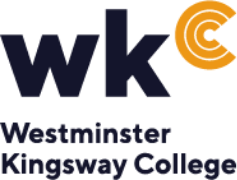
Digital Production, Design and Development - T Level


ABOUT THE COURSE
This course will be delivered at the new Centre for Applied Technology in Soho, in the heart of London's Digital and Creative economy. This is an exciting new addition to Westminster Kingsway College, opening in September 2024.
Our bespoke building will provide unparalleled facilities tailored for the creators and innovators of tomorrow, enabling learners to hone their craft on industry-standard equipment & develop the skills that the industry desperately needs.
The centre boasts industry-leading equipment and state-of-the-art training spaces including:
- Green Screen Studio
- Animation Studio
- Virtual Production Suite
- Edit, Grade, Dub and Voice-Over Studio
- Podcast Studio
- TV Studio and Control Room
- Lecture Theatre
- Comprehensively Equipped Alienware Animation Studios.
The repurposed Soho Centre will act as a beacon for world-class Creative and Digital sector provision, providing a talent pipeline of qualified and experienced individuals to access the fantastic career opportunities in these sectors.
The T Level in Production, Design, and Development offered by Pearson is an innovative and immersive program designed to equip students with practical skills and theoretical knowledge essential for thriving in the dynamic landscape of production and design industries. Tailored as a technical qualification, this course integrates classroom learning with substantial industry placements, providing students with a well-rounded understanding of various facets within the production and design sectors.
Furthermore, the course emphasises the use of modern technologies and software relevant to the production and design sectors. Students learn to navigate industry-standard tools and software, enhancing their technical competencies and adaptability within rapidly evolving industries.
Students will complete a minimum of 315 hours as part of their qualification in the industry on placement, this equates to 20% of your learning, and for the other 80% of the T Level, you will be learning in a classroom.
Embedded within the T Level will be English, Maths and Digital skills, weekly tutorials
WHAT WILL I STUDY?
Core Component
- Problem-solving
- Programming
- Emerging issues and the impact of digital
- Legislation and regulatory requirements
- Business context
- Data
- Digital environments
- Security
Occupational Specialism
- Analysing a problem to define requirements and acceptance criteria aligned with designing, implementing and testing software
- Changing, maintaining and supporting software-creating solutions in a social and collaborative environment
- Discovering, evaluating and applying reliable sources of knowledge
- Applying ethical principles and managing risks in line with legal and regulatory requirements when developing software
WHAT WILL I NEED?
You will need:
- 5 GCSEs at 9-4, inclusive of English and Maths
- Successful interview and assessment
HOW WILL I BE ASSESSED?
All assessments are externally marked and are split into two sections the core component and the occupational specialist component.
Core component:
Written Exam
- Core Paper 1: Digital Analysis, Legislation and Emerging Issues
- Core Paper 2: The Business Environment
Employer Set project (externally set)
Occupational Specialist Component:
Externally set project
A distinctive aspect of this course is the incorporation of an extensive industry placement, enabling students to apply their theoretical learning in practical settings. These placements provide invaluable exposure to the workings of production environments, allowing students to learn from experienced professionals, understand industry practices, and develop crucial employability skills.
WHAT WILL IT COST?
Aged 16-18
If you will be aged 16, 17 or 18 on 31st August prior to the start date of your course and you have the legal right to remain in the UK for the duration of your programme then your study with us will be free. Please see here for the documents you will need to show us.
Some courses will have other associated costs, such as for specialist materials and trips. Many of our students are eligible for financial support, see here for details.
WHAT CAN I DO AFTER?
Upon completion, graduates of the T Level in Production, Design, and Development emerge with a blend of practical skills, industry experience, and theoretical understanding, positioning them favorably for various roles in manufacturing, design engineering, product development, or further academic pursuits. This qualification serves as a stepping stone for individuals aspiring to contribute innovatively and effectively to the realms of production and design.
The T Level supports progression into entry-level jobs or higher education.
Job roles and progression paths could include:
- Software Development Technician
- Junior Developer
- Junior Web Developer
- Junior Application Developer
- Junior Mobile App Developer
- Junior Games Developer
- Junior Software Developer
- Junior Application Support Analyst
- Junior Programmer
- Assistant Programmer
- Automated Test Developer.
Higher Education and training paths could include:
- Level 3 Software Technician (Apprenticeship)
- Level 4 Software Developer (Apprenticeship)
- Higher National Certificate/Diplomas
- BSc Computer Games Programming
- BSc Software Engineering BSc
- BA Virtual Reality Design
- BSc Computing
- BSc Digital Media Design and Development
- BSc Computer Science


